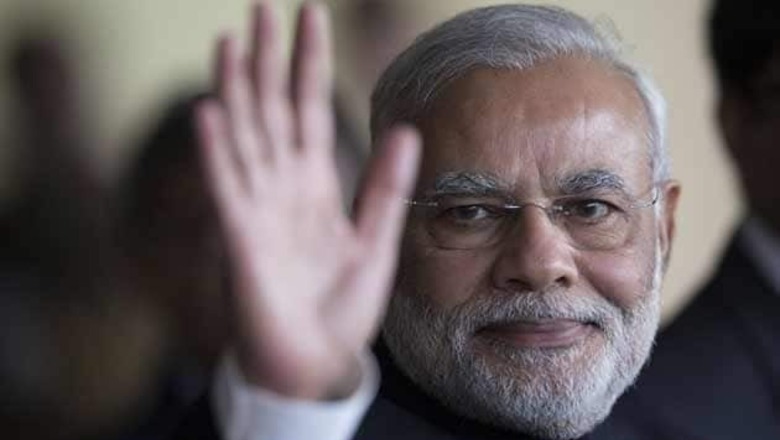
views
New Delhi: The after-glow of Narendra Modi's election victory nearly four months ago is expected to have helped India's lumbering economy register its fastest growth in more than two years for the quarter ending in June.
India's new prime minister has promised to make it easier to do business through speedier clearances and stable tax policies, allowing investors in Asia's third-largest economy hope of a rosier future after years of low growth and high inflation.
Economic growth is forecast to have picked up to 5.3 percent between April and June, according to a Reuters poll of 40 economists, sharply higher than 4.6 per cent in the previous quarter. The GDP data is due at 5.30 p.m. (1200 GMT) on Friday.
If the forecast proves correct, it would mark only the second quarter of above 5 per cent growth since early 2012.
Modi knows he must spur the economy to far higher rates of growth in order to provide jobs for the increasing numbers of young people joining the work force, and lift millions of Indians out of poverty.
The improvement in the GDP figures is largely due to the steps taken by the previous government to kick-start capital investments and spur consumer demand.
Those measures aided industrial production and vehicle sales.
The year-on-year growth has been helped also by a favourable statistical base because of weak economic activity last year.
But, there is little doubt that Modi's election - he won the first outright parliamentary majority in three decades - improved sentiment among consumers, investors and the business community.
Months before Modi's victory, investors poured money into India confident that the business focused leader would win.
Since taking office, Modi has initiated measures to minimise tax litigation, loosened caps on foreign investment in railway infrastructure and defence manufacturing, speeded up regulatory approvals and reduced bureaucratic discretion.
Foreign capital inflows to India have risen markedly, making Indian shares the best performers in Asia this year.
Waiting for big bang reforms
Even though the new Indian premier is yet to launch big-bang reforms needed to propel the economy back to a near double-digit annual growth, his three-month-old administration has received a big thumbs-up from Indian corporates.
An overwhelming majority of CEOs in two polls, published by two national dailies on Thursday, credited the Hindu nationalist leader for reviving business confidence and said they were starting to draw up new investment plans.
"As returns on investment improve, the corporate sector will be incentivized to lift capex," wrote economists at Morgan Stanley, who expect the annual pace of economic expansion to hit 6.8 per cent in the March quarter next year.
A recovery in industrial production, along with improvements in exports has led to a raft of upward revisions in the growth forecasts for the fiscal year to March 2015. This week Nomura upgraded its estimate to 6 per cent from 5 per cent earlier.
This augurs well for an economy stuck with sub-5 per cent growth for last two years.
However, it doesn't diminish what many economists say is a pressing need for structural reforms to create a broader and sustained economic revival.
Structural reforms will also help tackle India's recurring food price shocks, which have prevented the central bank from lowering interest rates and supporting the economic recovery.
Modi vows to build new roads, factories, power lines, high-speed trains and even 100 new cities.
These gigantic tasks will require an overhaul of India's strained public finances, stringent land acquisition laws, chaotic tax regime and rigid labour rules.
Modi has to expend political capital to push through those reforms, and he is still hampered by the lack of majority in India's upper house (Rajya Sabha), though upcoming state elections might put his party in a stronger position.
















Comments
0 comment